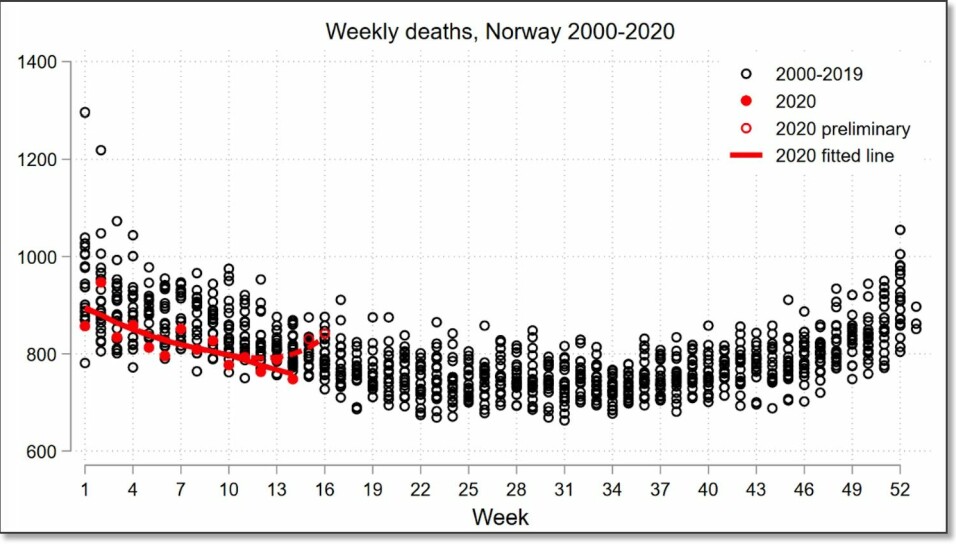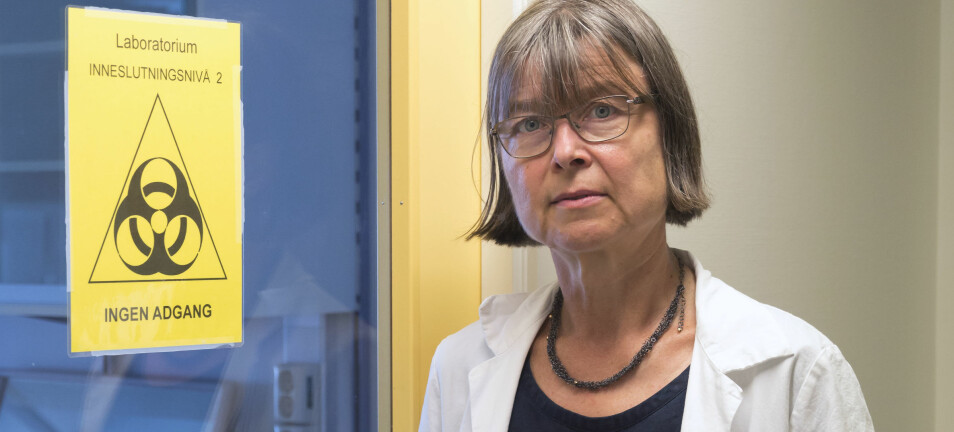
We will have pandemics every ten years, Norway’s Minister of Health told a national newspaper. Is that right?
We've taken a closer look at Minister of Health and Care Services Bent Høie’s assertion.
"... this is going to happen again. Our assessment is that it will happen roughly every ten years,” Høie said to VG, one of Norway’s largest circulation newspapers.
VG has used Høie’s statement as the headline of its interview with the Minister of Health and Care Services, but didn’t follow up the statement in the article itself. So ScienceNorway.no decided to look into the message the minister is conveying here.
It looks like his statement is based on knowledge.
But what do we really know about this?
Medical historians know a lot about pandemics
Svenn Erik Mamelund studies pandemic history at Oslo Metropolitan University (OsloMet). He says that researchers have knowledge about pandemics at least back to ancient Greece.
"In the last 500 years there have been around 15 pandemics worldwide," he says.
This means roughly three influenza pandemics each century.
“But there doesn’t appear to be a clear pattern in the length of time between them. It can range from a few years to more than 50,” he says. “I also don't see any indication that we are going to have them more often than we used to.”
The Ministry of Health and Care Services will not respond
When ScienceNorway.no contacted Health Minister Høie's communication people to find out more about the background for the minister's statement on the frequency of pandemics in coming years, they said to contact the Norwegian Institute of Public Health (NIPH).
How information on pandemic frequency has been transmitted from the NIPH to the Minister of Health, no one will say.
“No, we have not told anyone that there will be a pandemic every ten years,” replies Preben Aavitsland, a senior consultant at the Institute of Public Health, when asked.
He is quite clear that this information did not come from NIPH.
“Our assessment is that new pandemics, meaning new global epidemics, are fundamentally unpredictable. That is why preparedness for pandemics is so important,” he says.
Completely different periodicities
The world was affected by the last pandemic 11 years ago, which is almost in keeping with Høie’s assertion of a ten-year periodicity.
But before the swine flu in 2009, we have to look back more than 40 years to find the previous flu pandemic, the Hong Kong flu in 1968.
Before that, the Asian flu struck in 1957. Once again, the gap was around ten years.
But then we have to go all the way back to 1918 for the outbreak of the Spanish flu. That’s a gap of roughly 40 years.
Three flu pandemics every century
There were three pandemics in the last century.
The same was true of the 19th century. And the 18th century.
These pandemics occurred in 1968, 1957, 1918, 1889, 1833, 1830, 1781, 1732 and 1729.
In other words, the history of medicine tells us there were a total of nine pandemics over the past three centuries. And probably about 15 pandemics in the last five centuries.
That’s an average of 33.3 years between each pandemic.
While there were only three years between two of the pandemics in the 19th century, the longest period between two pandemics may have been 56 years.
Why ten pandemics every century to come?
Thus, pandemics appear to be surprisingly evenly distributed over the past three and five centuries, with exactly three every hundred years.
But there is no regular gap between them.
So is it likely that from now on we will have as many as ten pandemics every century, as the Minister of Health and Care Services warned?
Svenn Erik Mamelund, the OsloMet researcher, doesn’t think so.
“I also don’t know of other viruses or diseases with as great a pandemic potential as influenza and coronavirus,” he says.
“Both Ebola and Zika are other dangerous diseases. But for a disease to develop into a pandemic, it must both be very contagious and not kill too many people. Ebola is an example of a disease that has a mortality that is too high to develop into a worldwide pandemic,” he says.
Mamelund also can’t say for certain that past influenza pandemics weren’t caused by the coronavirus, like COVID-19. It’s simply not known for certain.
More infectious diseases?
“If the Minister of Health believes that there will be more infectious diseases that spread in the future, his opinion is in keeping with other people who have also sounded the same warning,” Mamelund says.
“Some diseases will probably occur more frequently. But I doubt that pandemics will do that,” he says.
There are good arguments for why there will be more illness and pandemics. Above all, humans travel much more than we used to. This clearly can contribute to the increased spread of infectious diseases. So can more contact between animals and humans.
On the other hand, we know far more today about infectious diseases than before. We also have far more resources we can bring to bear to limit the spread of infection and help the sick.
Fewer people in the world live in cramped housing with poor sanitary conditions. The health care system in many countries is constantly improving, and researchers are becoming better at developing vaccines and medicines.

The three pandemics of the 20th century
The last century was marked by three pandemics.
The first and clearly most serious was the Spanish flu in 1918 and 1919. How many people actually died is uncertain. But according to the World Health Organization (WHO), the flu virus may have claimed between 20 and 50 million deaths.
The Asian flu in 1957-1958 and the Hong Kong flu in 1968 were also both definitely influenza pandemics.
These were milder than the Spanish flu. Nevertheless, according to WHO, they claimed somewhere between 1 and 4 million deaths each.
As late as 1968 — when many of today's adults were children and adolescents — there was an influenza epidemic that killed between 10 and 30 times more of the world's population as a percentage, compared to the proportion of deaths in the world that the coronavirus pandemic has claimed until May this year (250,000 dead). There were just under half the number of people living in the world in 1968 compared to today.
Swine flu in 2009
The swine flu 11 years ago was the first pandemic of this century.
It was also the first pandemic the world community was really prepared for.
Once again, it was a type A flu virus that struck. The virus caused the alarm to go off all over the world, not least because it was seen that it was particularly hard on children.
Before the swine flu, member countries of the World Health Organization (WHO) had plans in place to reduce infection and death. For the first time in history, a vaccine was developed and distributed to many countries as early as the first year of the pandemic.
A good number of people probably experienced the swine flu and the new type A influenza virus as a fairly mild flu. Nevertheless, it is estimated that the 2009 pandemic took between 100,000 and 400,000 lives globally in just one year.
The unusual thing about the swine flu was that it hit children harder than regular seasonal flu. Seasonal flu is often the most dangerous for the elderly and people with chronic health problems. The same is true for the coronavirus behind COVID-19.
Much of the media coverage around the 2009 swine flu was about a vaccine that slightly increased the risk of narcolepsy for some people.
It’s possible that both this vaccine and the seemingly milder development of the 2009 pandemic than was feared led to both people and governments being less prepared than they should have been when the coronavirus appeared in 2020.
The pattern seems completely random
In summary, there is hardly anything that indicates for certain that pandemics will come either more often (as Bent Høie claims) or less often in the future.
We humans love to systematize things to understand them. That is why we love both conspiracy theories and other theories.
The number of pandemics that occur every century can seem to form a system. But the number of years between each pandemic actually seems quite random.
Risk communication is difficult
Risk communication is a very difficult field for health professionals and politicians. This is what the Minister of Health is embarking on when he now tells us that new pandemics will occur roughly every ten years from now on.
Research on preparedness and safety tells us that a society is always preparing for the last disaster it experienced. In Norway, therefore, much of the preparedness in recent years has focused on preventing another July 22 terrorist attack.
Preparing for a pandemic has been less of a focus.
The only thing we can say with great certainty is that we will continue to experience pandemics in the future. Here, Bent Høie has it right.
Translated by: Nancy Bazilchuk
Sources:
Svenn-Erik Mamelund: "Influenza, Historical", Elsevier, 2017.
WHO Europe: “Past pandemics”. Website.
Peter M. Sandman: "A severe pandemic is not overdue - it's not when but if," article on the Center for Infectious Disease Research and Policy website, 2007.
———
Read the Norwegian version of this article on forskning.no




































